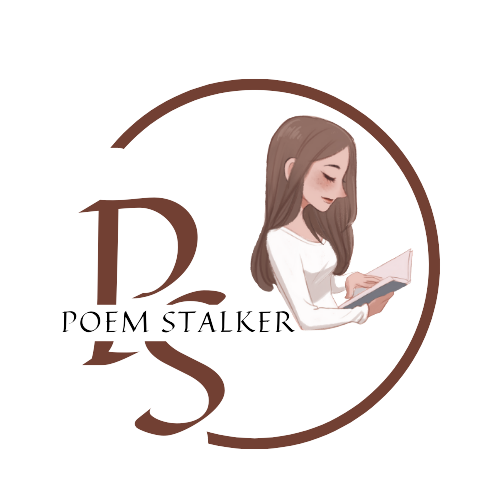 11.Cinquain
11.Cinquain
A cinquain is a five-line poetic form that offers a concise structure for expressing thoughts, observations, or emotions. Cinquains follow a specific syllable pattern for each line, resulting in a visually and rhythmically pleasing poem. The five lines typically have 2, 4, 6, 8, and 2 syllables, respectively.
Cinquains are often used to capture a single image or moment, focusing on brevity and impactful language. There are various types of cinquains, each with its own rules, but the most common type is the American Cinquain, which follows the syllable pattern mentioned above.
EXAMPLE
Blossom
Pink,
Delicate,
Unfolding, thriving—
Nature’s masterpiece in spring—
Flower.
In this cinquain, the syllable pattern is 2-4-6-8-2. The poem captures the essence of a blossoming flower in just a few words.
Cinquains offer a structured yet flexible form for poets to experiment with language, imagery, and emotions while maintaining a concise structure.
12.Tanka
A tanka is a traditional Japanese form of poetry that follows a specific syllable pattern and often focuses on nature, emotions, and introspection. Tanka poems consist of five lines with a syllable pattern of 5-7-5-7-7. This syllable structure provides a rhythm and balance that allows poets to convey thoughts and emotions within a concise framework.
Tanka poems can capture a moment, express feelings, or contemplate deeper themes. They often have a contemplative and evocative quality, inviting readers to connect with the emotions and imagery presented.
EXAMPLE
Amidst cherry blooms,
Whispers of a fading spring—
Love’s delicate touch,
Promises written in pink,
Heart’s petals drifting on wind.
In this tanka, the syllable pattern follows 5-7-5-7-7. The poem captures the fleeting beauty of cherry blossoms and uses the natural imagery to convey emotions and a sense of transience.
Tanka poems offer a glimpse into a moment or feeling while adhering to a structured form, making them a versatile and expressive way to convey depth and emotion.
13.Ghazal
A ghazal is a poetic form with roots in Arabic and Persian literature. It is characterized by its lyrical and melodic nature, often focusing on themes of love, loss, longing, and beauty. Ghazals typically consist of rhyming couplets that are independent of each other, allowing each couplet to convey its own thought or emotion.
One of the key features of a ghazal is its use of a refrain—a repeating word or phrase at the end of each couplet. This refrain serves to unify the poem while also creating a musical quality. Each couplet within a ghazal should be able to stand alone as a complete thought.
EXAMPLE
Mirza Ghalib, a renowned Urdu and Persian poet
دل ہی تو ہے نہ سنگ و خشت، درد سے بھر نہ آئے کیوں
روئیں گے ہم ہزار بار، کوئی ہمیں ستائے کیوں
Translation
It’s just a heart, not a stone or brick, it shouldn’t fill with pain,
Why should I cry a thousand times, let someone make fun of me?
In this example, you can see the rhyming pattern of the couplets and the repeated phrase “کیوں” (kyun), which serves as the refrain. Each couplet presents its own idea while maintaining the overall theme and mood of the ghazal.
Ghazals are often sung as well, and their emotional and lyrical qualities make them deeply resonant forms of poetry. They continue to be popular in various languages and cultures, showcasing the universality of human emotions and experiences.
14.Elegy
An elegy is a poetic form that is characterized by its mournful and reflective tone. It is typically written in honor of someone who has passed away or to lament a loss, whether it be the death of a person, an era, an idea, or a way of life. Elegies often explore themes of grief, mortality, and the transient nature of human existence.
Elegies can take various forms and styles, but they share a common emotional thread of sadness and remembrance. They can range from personal expressions of loss to broader reflections on the impermanence of life.
EXAMPLE
“Elegy Written in a Country Churchyard” by Thomas Gray
The boast of heraldry, the pomp of power,
And all that beauty, all that wealth e’er gave,
Awaits alike the inevitable hour.
The paths of glory lead but to the grave.
In this elegy, Thomas Gray reflects on the lives of ordinary people buried in a country churchyard, pondering the fates of those who did not achieve fame or wealth. The lines emphasize the universal nature of mortality and the transient nature of human achievements.
Elegies provide a way for poets to process and convey feelings of loss, offering a form of catharsis and a means of paying tribute to the departed. They continue to be a respected and poignant form of expression in literature.
15.Concrete Poetry
Concrete poetry, also known as visual poetry or shape poetry, is a form of poetry in which the arrangement and presentation of the words on the page contribute to the overall meaning and visual impact of the poem. In concrete poetry, the visual appearance of the poem is as important as the words themselves. The form often seeks to create a relationship between the visual representation of the text and its thematic content.
Concrete poems can take various shapes, patterns, and arrangements on the page, enhancing the reader’s experience and interpretation. The placement of words, letters, and even the use of typography can create visual connections to the poem’s subject or theme.
EXAMPLE
Concrete poem, shaped like a wave
W
A
V
E
S
.
In this example, the arrangement of the letters mimics the shape of ocean waves, visually enhancing the poem’s representation of the subject.
More complex concrete poems can take forms such as spirals, circles, animals, objects, and more. The goal is to engage the reader in a multisensory experience that combines visual and textual elements to convey meaning and emotion.
Concrete poetry challenges traditional notions of how words are presented on the page, allowing poets to experiment with both language and visual artistry to create unique and impactful works.

SOME FACTS ABOUT POETIC FORM
Poetic form refers to the structure, style, and organization of a poem. It includes elements such as rhyme, meter, line length, stanza structure, and more. Here are some facts about poetic form:
- Rhyme: Rhyme is the repetition of similar sounds at the end of lines in a poem. Common types of rhyme include perfect rhyme (e.g., cat/hat) and slant rhyme (e.g., time/line), which is when the sounds are similar but not identical.
- Meter: Meter is the rhythmic pattern of stressed and unstressed syllables in a line of poetry. Common meters include iambic pentameter (five pairs of alternating unstressed and stressed syllables per line) and trochaic tetrameter (four pairs of stressed and unstressed syllables per line).
- Stanza: A stanza is a group of lines within a poem that function like a paragraph in prose. The number of lines and their arrangement in a stanza can vary, with common forms including couplets (two lines), quatrains (four lines), and sonnets (typically 14 lines).
- Free Verse: Free verse is a type of poetry that does not adhere to a specific rhyme or meter pattern. Instead, it relies on the natural rhythms of language and the poet’s artistic expression.
- Sonnet: A sonnet is a 14-line poem with a specific rhyme scheme and meter. Two common types are the Shakespearean (or English) sonnet and the Petrarchan (or Italian) sonnet, each with its own rhyme and stanza structure.
- Haiku: Haiku is a traditional Japanese form of poetry consisting of three lines with a syllable pattern of 5-7-5. Haikus often focus on nature and evoke a sense of Zen-like simplicity.
- Limerick: Limericks are humorous poems consisting of five lines with a specific rhyme and meter (anapestic trimeter). They are known for their light-hearted and often nonsensical content.
- Ballad: Ballads are narrative poems that often tell a story. They typically have a simple rhyme scheme and are written in quatrains with alternating lines of iambic tetrameter and iambic trimeter.
- Ode: An ode is a formal, often lyrical poem that addresses a particular subject with reverence and praise. Odes can vary in structure and style but often employ a consistent stanza pattern.
- Villanelle: A villanelle is a 19-line poem with a specific rhyme scheme and repeating lines. It consists of five tercets (three-line stanzas) followed by a quatrain (four-line stanza). The first and third lines of the first tercet are alternately repeated as the last lines of the subsequent tercets and together as the final two lines of the poem.
- Acrostic: An acrostic poem uses the first letters of a word or phrase to form a message or word vertically when read from top to bottom. It can add a hidden layer of meaning to the poem.
- Pantoum: A pantoum is a structured form of poetry where each line of a stanza is repeated in a specific pattern in the following stanza, creating a cascading effect. The final line of the poem often repeats the first line.
Poetic form can greatly influence the mood, tone, and impact of a poem. Poets often choose specific forms to enhance their creative expression and convey their messages effectively.

SOME MORAL VALUE OF POETIC FORM
Poetic form can convey and promote various moral values and lessons through the power of language, imagery, and storytelling. Here are some moral values associated with poetic form:
- Empathy: Poetic form allows poets to delve into the experiences and emotions of others, fostering empathy by helping readers connect with different perspectives, cultures, and life situations.
- Beauty: Many poems emphasize the beauty of nature, art, and human experiences. This appreciation of beauty encourages people to find and celebrate the beauty in everyday life, which can lead to a greater sense of gratitude and contentment.
- Reflection: Poetry often encourages self-reflection and introspection. It prompts readers to ponder life’s complexities, their own actions, and the consequences of their choices, promoting self-awareness and personal growth.
- Empowerment: Poetic form can inspire and empower readers. Poems often feature characters or speakers who overcome challenges, face adversity, or express resilience, encouraging readers to do the same in their lives.
- Unity: Poetry has the power to unite people across cultures, generations, and backgrounds. Shared experiences and emotions expressed through poetry can foster a sense of community and solidarity, emphasizing the common humanity that binds us.
- Compassion: Many poems explore themes of suffering, loss, and hardship, which can evoke feelings of compassion and a desire to alleviate the suffering of others. Poetic form can be a call to action for social justice and humanitarian efforts.
- Tolerance: Poetry often celebrates diversity and differences. It encourages readers to accept and appreciate people with varying backgrounds, perspectives, and beliefs, fostering a more tolerant and inclusive society.
- Morality: Poems frequently explore ethical dilemmas and moral choices, prompting readers to consider the consequences of their actions and to make ethical decisions in their own lives.
- Hope: Even in the face of adversity, many poems convey a message of hope and optimism. They remind readers that, despite challenges, there is potential for positive change and a brighter future.
- Preservation of Culture: Poetry often serves as a vessel for preserving cultural traditions, stories, and values. It can pass down the wisdom and moral teachings of one generation to the next, ensuring continuity and cultural richness.
- Environmental Awareness: Some poems focus on the beauty of the natural world and the importance of environmental conservation. They can inspire readers to appreciate and protect the environment, promoting ecological responsibility.
- Self-Expression: Encouraging self-expression through poetry can promote authenticity and personal growth. It teaches individuals to express their thoughts, emotions, and values in creative and constructive ways.
In essence, poetic form serves as a vehicle for the expression and transmission of moral and ethical values. Through its artistry and emotional depth, poetry can inspire readers to contemplate, internalize, and act upon these values, contributing to personal and societal growth.

Life with poetic form
Living a life with a deep appreciation for and engagement with poetic form can be a rich and rewarding experience. Here are some ways in which poetry and poetic form can enhance one’s life:
- Enhanced Language Skills: Engaging with poetry on a regular basis can improve your language skills, including vocabulary, syntax, and figurative language. It encourages a deeper understanding of words and their nuances.
- Emotional Expression: Poetry allows you to express your emotions in a creative and cathartic way. Writing and reading poems can be a therapeutic outlet for processing feelings and experiences.
- Creative Outlet: Poetic form provides a structured but flexible canvas for creativity. Whether you’re writing poems, experimenting with different forms, or crafting metaphors, it allows you to explore your artistic side.
- Mindfulness and Reflection: Poetry often requires careful observation of the world and self-reflection. It can cultivate mindfulness, encouraging you to pay attention to the details of life and your inner thoughts and feelings.
- Empathy and Understanding: Reading poetry from diverse voices and backgrounds can expand your empathy and understanding of the human experience. It exposes you to different perspectives and cultures, fostering a broader worldview.
- Connection to History and Tradition: Poetry has a long and rich history in various cultures. Engaging with poetic forms can connect you to literary traditions and the wisdom of previous generations.
- Communication Skills: Poetry hones your ability to communicate effectively. Writing poems forces you to convey complex ideas and emotions concisely and powerfully.
- Aesthetic Appreciation: Poetic form encourages an appreciation for aesthetics, including the beauty of language, rhythm, and imagery. It can help you find beauty in everyday life.
- Catharsis and Healing: Many people find solace and healing in writing and reading poetry. It provides an outlet for processing grief, trauma, and other challenging life experiences.
- Community and Connection: Engaging with poetry can connect you with a community of fellow poets and poetry enthusiasts. Sharing your work and discussing poems with others can be a source of support and camaraderie.
- Intellectual Stimulation: Analyzing and interpreting poetry can be intellectually stimulating. It encourages critical thinking, interpretation, and the exploration of layers of meaning.
- Inspiration: Poetry can serve as a wellspring of inspiration for other creative endeavors, such as music, visual arts, and storytelling. It can fuel your imagination and lead to innovative ideas.
- Spiritual and Philosophical Exploration: Many poems delve into deep philosophical and spiritual questions. Reading and writing poetry can be a means of exploring existential and metaphysical themes.
- Legacy and Impact: Poetry has the potential to leave a lasting impact on readers and society. Your poems, if shared, can become part of your legacy, touching the lives of others even after you’re gone.
Incorporating poetic form into your life can provide a deeper connection to language, emotions, and the human experience. It encourages self-expression, empathy, and creativity, enriching your life in profound ways. Whether you’re a writer, reader, or both, poetry can be a lifelong companion on your journey.
- How may I help further? let me know in down comments. Easy with www.poemstalker.com
- Want to know amazing facts about history Read now
POETIC FORM POETIC FORM POETIC FORM POETIC FORM POETIC FORMPOETIC FORM POETIC FORM POETIC FORM POETIC FORM POETIC FORMPOETIC FORM POETIC FORM POETIC FORM POETIC FORM POETIC FORM
